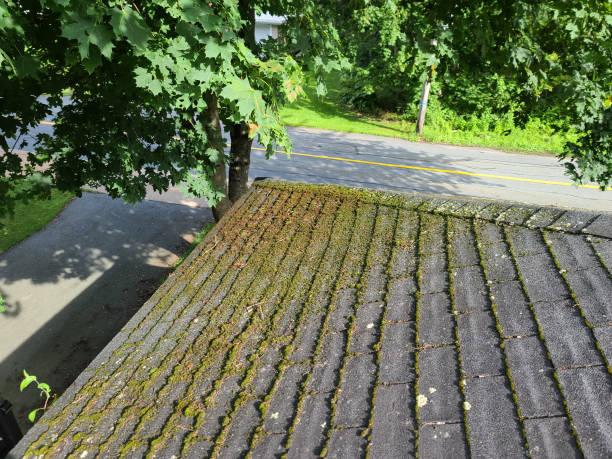
Mold on Roof and Common Problems in New Rochelle
Mold on Roof and Other Common Roof Problems in New Rochelle
Homeowners in New Rochelle often face roofing challenges brought on by moisture, aging materials, and the region’s seasonal shifts. One of the most persistent issues? Mold on roof surfaces. This type of damage is more than just cosmetic—it can compromise the integrity of your shingles and point to deeper problems within your roofing system.
At RJM Best Roofing Inc., we’ve seen how untreated roof mold leads to leaks, rot, and costly repairs. In this post, we’ll break down what causes roof mold, how it ties into the common roof problems in New Rochelle, and what you can do to protect your home.
Why Does Mold Grow on Roofs?
Mold thrives in damp, shaded areas, making New Rochelle’s tree-lined neighborhoods especially susceptible. When debris like leaves or branches build up, they trap moisture on your roof’s surface. Over time, this creates the perfect environment for mold and algae to grow.
Older roofs or those with poor ventilation also retain moisture longer, increasing the risk of visible streaks or dark patches. Left untreated, mold can eat away at roofing materials, weakening shingles and allowing water to seep in.
Signs You Have Mold on the Roof
Not all mold is immediately obvious. Some signs to watch for include:
⦁ Black or green streaks running down shingles
⦁ Discoloration or darkened patches that don’t fade
⦁ A musty odor near your attic or upper floors
⦁ Sagging or softened roof spots, indicating trapped moisture beneath the surface
If you’re seeing any of these, it could be part of a larger pattern of common roof problems in New Rochelle that require professional attention.
How Mold Leads to Bigger Roof Issues
What starts as minor staining can evolve into structural decay if mold is allowed to spread. Mold feeds on organic roofing materials like asphalt and wood. Over time, this leads to:
⦁ Shingle deterioration
⦁ Rotting roof decking or underlayment
⦁ Insulation damage in attics
⦁ Increased risk of leaks and energy loss
Addressing mold early helps extend the life of your roof and prevents expensive restoration down the road.
Preventing Mold and Protecting Your Roof
Prevention starts with routine care. Trim overhanging branches to increase sunlight exposure and airflow. Clean your gutters regularly so rainwater doesn’t pool near the roofline. After storms, check for and remove any debris buildup.
Proper attic ventilation also plays a key role. It reduces excess heat and moisture, discouraging mold growth from the inside out. When replacing or repairing parts of your roof, we always assess ventilation as part of the process.
FAQs About Roof Mold in New Rochelle
Is mold on a roof dangerous?
Yes. While it may not pose an immediate health risk from the outside, it signals deeper moisture issues and can damage your roof materials over time.
Can I remove mold myself?
Small patches can be cleaned with a gentle solution, but we recommend professional service for thorough removal and prevention, especially on high or steep roofs.
How often should I inspect my roof for mold?
At least once or twice a year, ideally in spring and fall, or after a major storm.
Keep Your Roof Mold-Free and Durable
Whether you’ve spotted dark streaks or you’re unsure about your attic’s ventilation, addressing mold on roof surfaces early is the best way to avoid major headaches. At RJM Best Roofing Inc., we help New Rochelle residents identify and fix mold-related problems as part of our broader roof care services.
Contact us today for an inspection and let’s keep your roof strong, clean, and mold-free year-round.